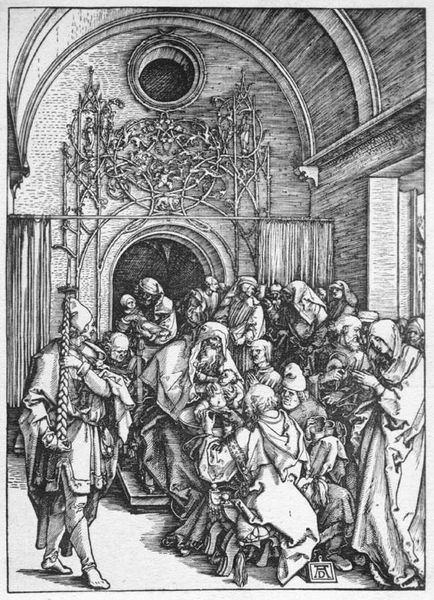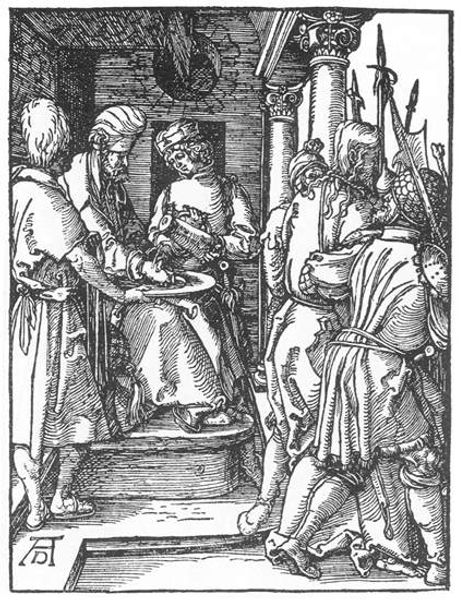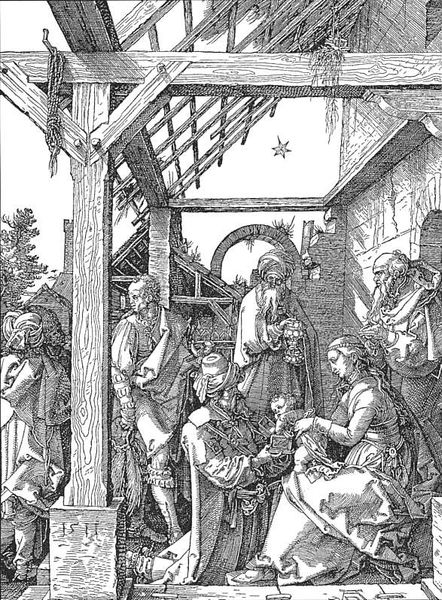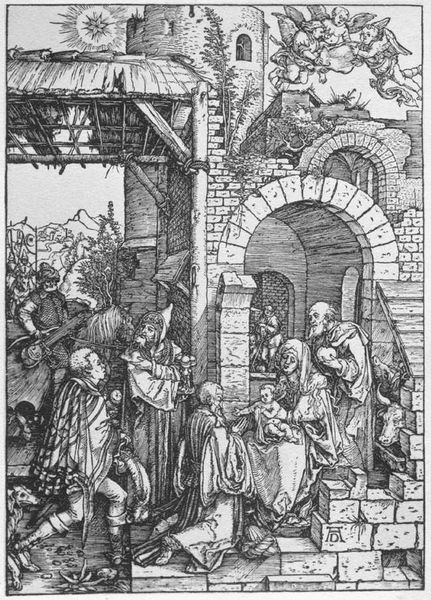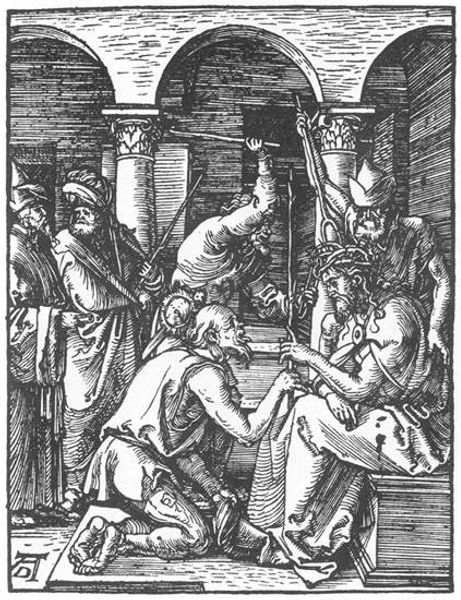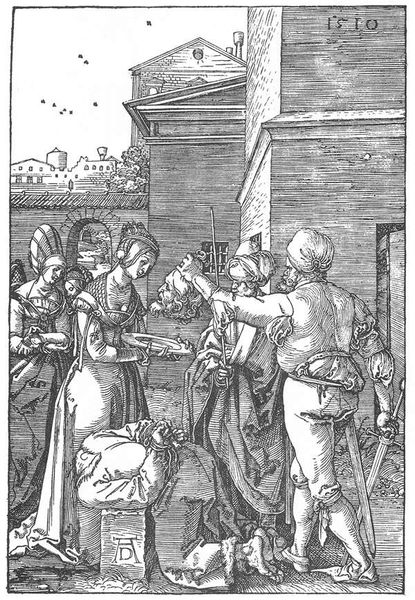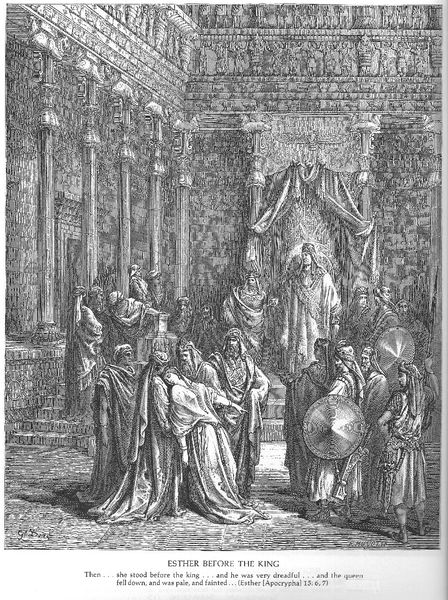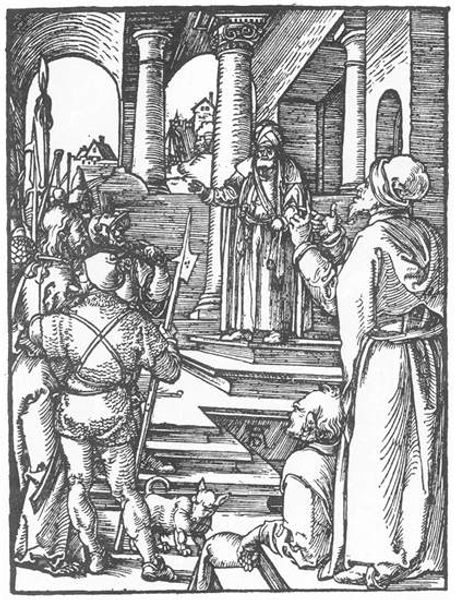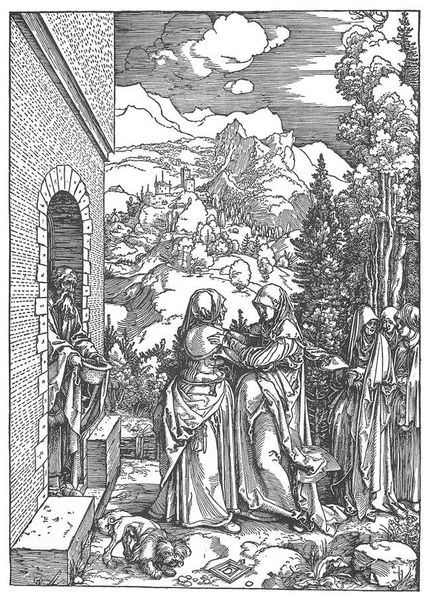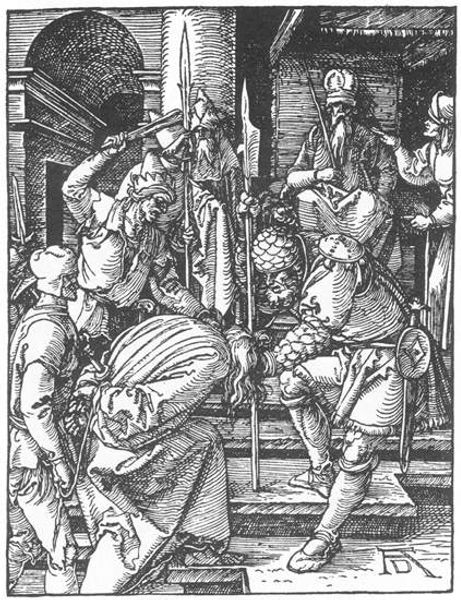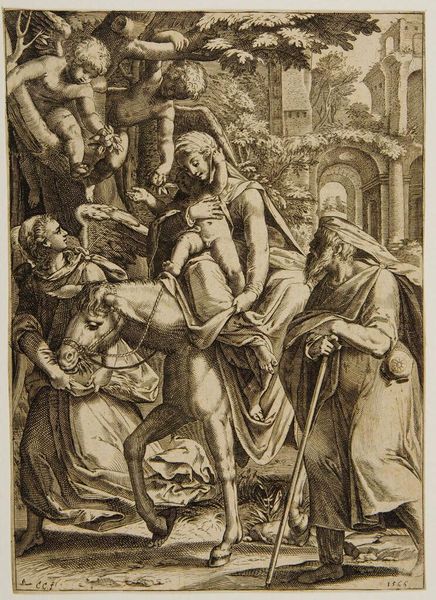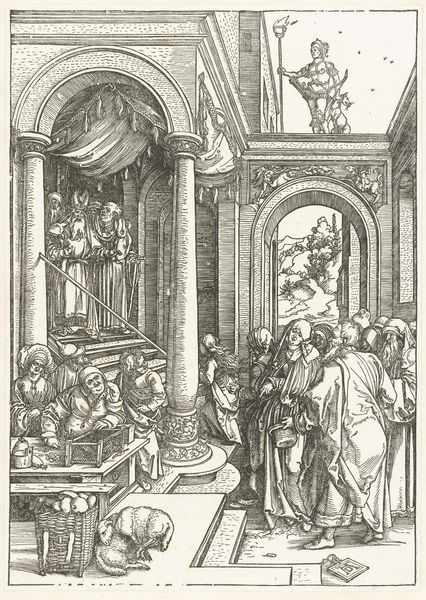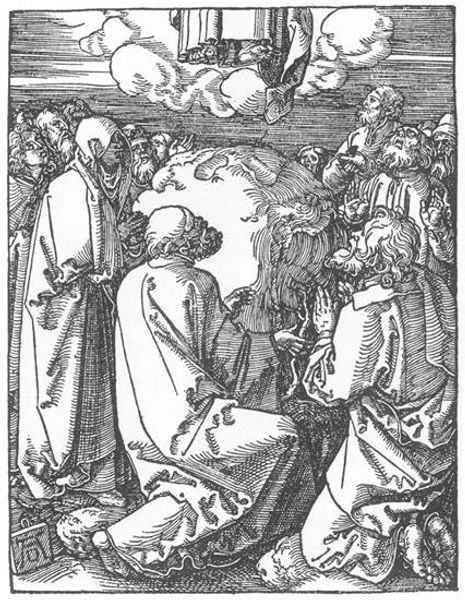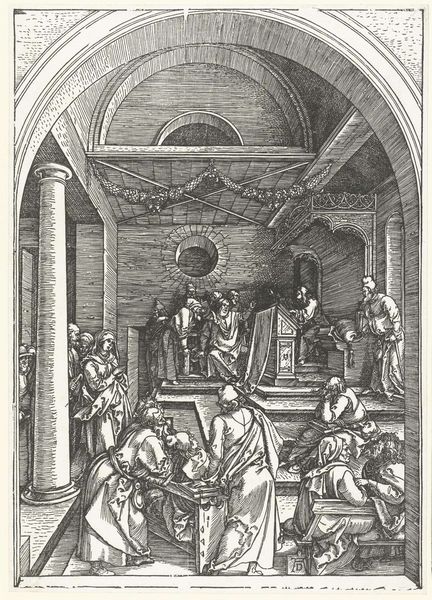
print, woodcut, pen, engraving
#
portrait
# print
#
pen illustration
#
figuration
#
form
#
ink line art
#
arch
#
woodcut
#
christianity
#
line
#
pen work
#
pen
#
history-painting
#
northern-renaissance
#
engraving
#
virgin-mary
#
angel
#
christ
Copyright: Public domain
Curator: What strikes me immediately is the intricate detail despite it being a print. It has an air of solemnity, perhaps even restrained joy. Editor: Indeed. This is Albrecht Durer's "The Virgin Worshipped by Angels and Saints," created around 1500. This work exists as an engraving, a testament to the explosion of printmaking at the turn of the 16th century and how it shaped artistic dissemination, particularly in the Holy Roman Empire. Curator: The density of figures is quite compelling. So many individuals, are they named saints, encircling the Virgin Mary, each holding their own unique object that identifies them? Editor: Absolutely, each figure contributes to a symbolic tapestry that would have been instantly legible to a contemporary viewer. Look at the angel with the harp. Music, harmony, the divine. Then, we observe the Lamb which represents Christ. And, consider the open book held aloft by a figure—representing knowledge, wisdom and divine word. These were familiar symbols deeply ingrained in the collective cultural memory. Curator: How did this visual language influence the perception and role of religious imagery among the public? Did works like this become accessible through their multiplication as prints? Editor: Precisely! Dissemination of the print brought images into homes that formerly were available in expensive panel paintings or wall-sized fresco, shifting not only patronage models but devotional practices, allowing people from many social positions the chance to have religious iconographies as an integral part of the family and culture they built around their dwellings. It also solidified Durer's legacy, because while the painting, frescos or woodcuts where rare objects and could have been made by only one artists, or sometimes many from the same studio; these prints made the genius of Albrecht Durer spread through the whole European continent with few mediators. Curator: A fascinating insight. I still am drawn to the formal organization. The rigid structure with these huge columns with circular body seems to reinforce a kind of solemn monumentality, that also acts as the perfect framing and contrast for the rounded forms of the many faces populating the image. What I appreciate is Dürer's craft for lines, capable of suggesting any sort of effect; in some areas we have the almost violent stroke that portraits rough skins and weathered garments, in other areas we see these hair-like lines drawing ethereal veils in an impeccable technical achievement. Editor: So true! It makes us realize the incredible impact Dürer had in establishing a system of visual iconography, in his prints but in many others art forms; from painting, to small statuary for praying and remembrance of saints; establishing and setting the imagery that still impacts how people think about art and religiosity now a day. Curator: And how we understand the possibilities of line itself!
Comments
No comments
Be the first to comment and join the conversation on the ultimate creative platform.
